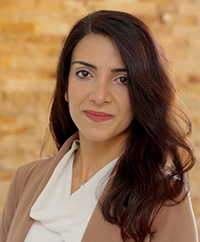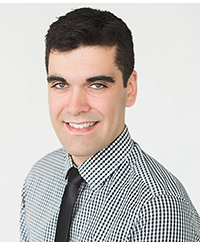Spring 2021 (Volume 31, Number 1)
Training in the Shadow of the COVID-19 Pandemic
By Azin Ahrari, MD, FRCPC; and Peter van Stolk, MD, FRCPC
Download PDF


Drs. Azin Ahrari and Peter van Stolk were rheumatology trainees at the University of British
Columbia in 2020 and discuss here their experience during the pandemic.
After completing internal medicine residency,
we have two years to prepare
for a career in rheumatology. We are
advised to interact with as many patients as
we can, feel 1,000 joints or more, and foster
mentorships upon which our expertise
is built. This past year has forced programs
and trainees to adapt to a new physically-distanced,
virtually-connected world.
As doctors in training, schedules and expectations
are generally laid out for us on a
color-coded sheet. However, in March 2020,
our schedules were changed in a matter of
days. We were removed from clinics and asked
to cover in-patient services where there
was an anticipated need. By July 2020, we were able to return
to regularly scheduled rotations, but we returned to
clinics that were mostly virtual. This reduced our ability
to practice critical skills of physical examination and joint
injections. However, we honed our skills of performing
telehealth assessments including physical examination at
a distance. We learned to establish rapport with our patients
on the phone or through video. We mastered the art
of knowing when our patients needed to be seen in person.
These were skills that we never set out to learn at the beginning
of our rheumatology careers, but will prove to be
useful in this new age of medicine.
Aside from impacting rheumatology training, the pandemic
has led to cancellation or re-imagining of many
domestic and international meetings. Networking and
mentorship have been fostered over phone calls and Zoom
meetings. We took for granted the opportunity to start a
conversation with a stranger while standing in line for a
coffee, a random interaction that may lead to a collaboration,
mentorship or friendship. As rheumatology trainees,
these meetings served a pivotal role in inspiring us, helping
us grow, and connecting us with others in the field.
Rheumatology residency is also a time for travelling
electives, which have been drastically limited. Exposure
to rheumatology in another jurisdiction not only enriches
our knowledge, but perhaps provides a chance at discovering
a program or city that is right for us.
We must express gratitude for our teachers who strived
to meet our needs in creative ways. Whether it be online objective
structured clinical examinations (OSCEs) or lecture
series, we have maintained connections with our colleagues
despite physical distancing. Most patients have learned to
trust us despite our limited ability to physically be by their
side. We appreciate frontline workers in the community and
in the hospital more than ever. Oddly enough, we relish the
memories of flight delays, taxis and hotels, because it meant
we were on our way to share knowledge and a few laughs
with good friends. Our training may have been different,
but perhaps we are better equipped to serve our patients
with rheumatic diseases in a post-pandemic and virtually-oriented
medical landscape. We are ready for new challenges
in our early post-training careers, and look forward to
navigating these with the adaptability and skills we have
honed this past year!
Azin Ahrari, MD, FRCPC
Rheumatology Resident,
University of British Columbia
Vancouver, British Columbia
Peter van Stolk, MD, FRCPC
Rheumatologist,
Kelowna, British Columbia
|
